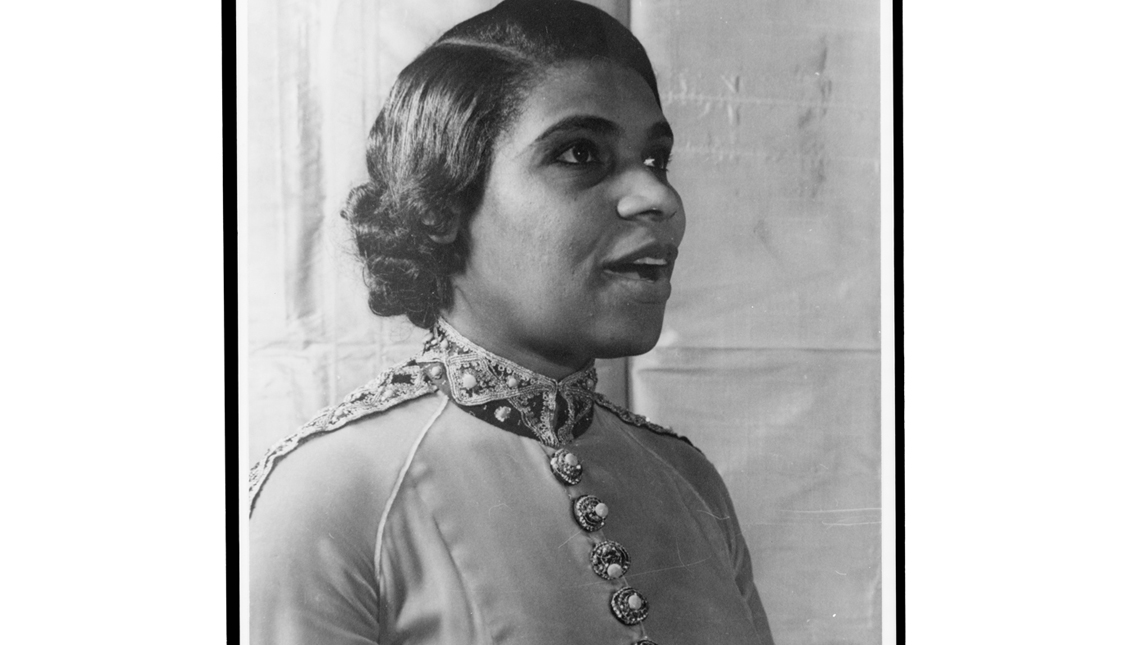
The Marian Anderson Museum in South Philly gets a financial boost and a statue in front of the Academy of Music
Anderson’s voice enchanted listeners in North and South America for decades during the 20th century.
The Marian Anderson Museum on South Martin and Christian Streets was one of the many art centers that suffered amid the COVID-19 pandemic from the lack of funds and visitors.
The museum was also a victim of natural disaster, including severe flooding. The flood caused over $200,000 in destruction, damaged countless irreplaceable artifacts, and prized possessions from the famous opera singer.
The National Trust for Historic Preservation recently announced $3 million in grants to 40 locations across the U.S. through its African American Cultural Heritage Action Fund. The Marian Anderson Museum received $75,000 from the fund and it will be used to pay for exterior renovations.
Jillian Patricia Pirtle, the CEO of the National Marian Anderson Museum and Historical Society explained the flood caused irreversible damage.
Pirtle is hoping fans of Anderson could also spare a donation to keep the museum afloat.
“We are hopeful that there are those in Philadelphia and across the nation who are willing to remember the sacrifices of Anderson’s life and how much she cared for others and helped others across the nation,” Pirtle said in a statement on the museum’s website. “At this time you would be willing to help Anderson and her home as we try to repair and replace.”
Along with the restoration, a potential statue of Anderson is also in the works, according to the Associated Press.
Carol Clark Lawrence, Philadelphia’s former director of the Office of Arts and Culture and also an adviser to the Marian Anderson sculpture task force is joining forces with Denyce Graves, a famous opera singer, to propose a statue of Anderson on Broad Street in Philadelphia.
“Hopefully this is just the beginning of a much more diverse collection of public art,” Lawrence told the AP.
She was also involved in the development of the Octavius Catto statue in front of City Hall, an artifact that was unveiled in September 2017.
“There’s a huge opportunity to consider other individuals who deserve to be honored,” she said.
Pirtle says that she is on board with a new monument of Anderson in the works. For her, it is fitting that she receives praise for her effort during the civil rights movement.
“I am hoping it can be done the right way, with it being attached to the museum and historical society and to have that support,” said Pirtle. “It would have such less meaning as a statue and monument without it leading to the support of her heartbeat, Marian Anderson’s heartbeat.”
RELATED CONTENT
Pirtle hopes the monument will rightfully tell the story of Anderson, and the importance of learning more about her legacy.
Anderson was born and raised in South Philadelphia along with her two other siblings, Ethel and Alyse. Her parents saw great potential in her dynamic voice, but could not afford training. From the age of six, Anderson received lessons at the Union Baptist Church located on 19th and Fitzwater streets.
Later on, Anderson began touring North and South America where people fell in love with her voice. One of her most impactful moments was in 1939, when the Daughters of the American Revolution refused to allow Anderson to perform at the Constitution Hall because she was Black.
The instance sparked outrage and Eleanor Roosevelt, and along with her husband, President Franklin D. Roosevelt invited her to perform instead in front of the Lincoln Memorial on Easter Sunday, 1939.
It was there that her voice enchanted an audience of over 75,000 people.
On Jan. 7, 1955, she became the first African-American singer to perform as a member of the Metropolitan Opera in New York City, breaking barriers for Black opera singers after her.
Members of the Marian Anderson sculpture task force are hoping to have the monument in front of the Academy of Music.
For more information on the Marian Anderson Museum, please visit its website.











LEAVE A COMMENT: